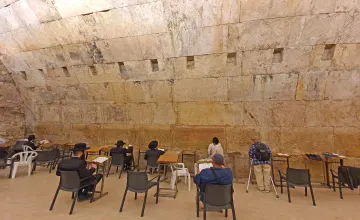Brown Hotel Mahane Yehuda Jerusalem – A fun hip new hotel in the best location in Jerusalem
Jerusalem travel guideBrown Mahane Yehuda is the fourth hotel in the Brown hotel collection in Jerusalem, brother to Villa Brown, Villa Braun in Moshava and Braun JLM which opened last February. The hotel is Located at 105 Jaffa St. next to the famous Mahane Yehuda market, which in recent years has become the center of Jerusalem’s nightlife and where the best bars and restaurants of the city are located today. The hotel offers a combination of a chic urban atmosphere with local touches inspired by the colorful market.
At the entrance to the hotel, in a spacious space with an industrial design and next to it a green and blooming garden, a chef’s restaurant will soon open, which will turn towards midnight into a sexy cocktail bar that will host a crowd of tourists alongside local revelers until the wee hours of the night.
Already at the entrance to the lobby of Brown Mahane Yehuda, you can see that the entire area has been designed in the atmosphere of the motto Work Hard, Play Harder – a New York design, dim, intimate, the kind that envelops the guest the morning after the party and eases the hangover feeling. Next to the X’s library that has become the hallmark of Brown hotels in Israel and around the world, exposed white and concrete walls covered with heavy golden velvet curtains introduce the guests to the hotel’s unique atmosphere. The lobby of Brown Mahane Yehuda is the perfect place to start the evening before the real departure.
Rooftop
You are invited to go up to the roof of the hotel and enjoy an urban landscape like only Jerusalem can produce.
In the background: music, on the side: a cocktail and around pampering jacuzzi baths.
(The rooftop is active in the spring and summer seasons only)
The hotel rises next to the colorful and bustling Mahane Yehuda market, which in recent years has become a top tourist destination for all culinary and entertainment lovers. Fragrant spice stalls, sweets in glittering cellophanes, jades shouting their wares from afar, artisanal patisserie and boulangerie stalls and a host of restaurants and eateries, from old fashioned wicks to up-to-date chef restaurants. As darkness falls, a host of particularly happy neighborhood bars join the celebration. The many other entertainment centers that Jerusalem offers are also within walking distance: Jaffa Pedestrian Street with its many shops, Davidka Square and the historic Cats Square, the magical Nachalat Sheshiva pedestrian street and the Museum of Tolerance next to it, which is expected to open soon, and of course, the Old City on its walls.
The hotel’s 110 luxuriously designed rooms are all decorated in dark colors and golden touches and are designed to comfortably accommodate individuals, couples and families. The hotel offers 7 types of rooms, all equipped with spacious king-size beds with the highest quality linens, a mini-bar and a work desk. The bathrooms in all rooms are equipped with luxurious rain-fall showers and great bath products.
On the fifth floor you will find the well-equipped gym, which will allow you to keep your heart rate high during your vacation.
You are invited to conduct business as usual and book a place in the well-equipped conference room, located on the first floor.
The room is adapted for up to 16 people, and accommodation and meal packages can be added accordingly.
Our spa team will be happy to offer you a variety of professional treatments that will allow you to recharge your body and mind with new energies. You can book an overnight stay at the Brown Brown Mahane Yehuda hotel as part of a romantic and pampering overnight stay and spa package, by prior arrangement.






